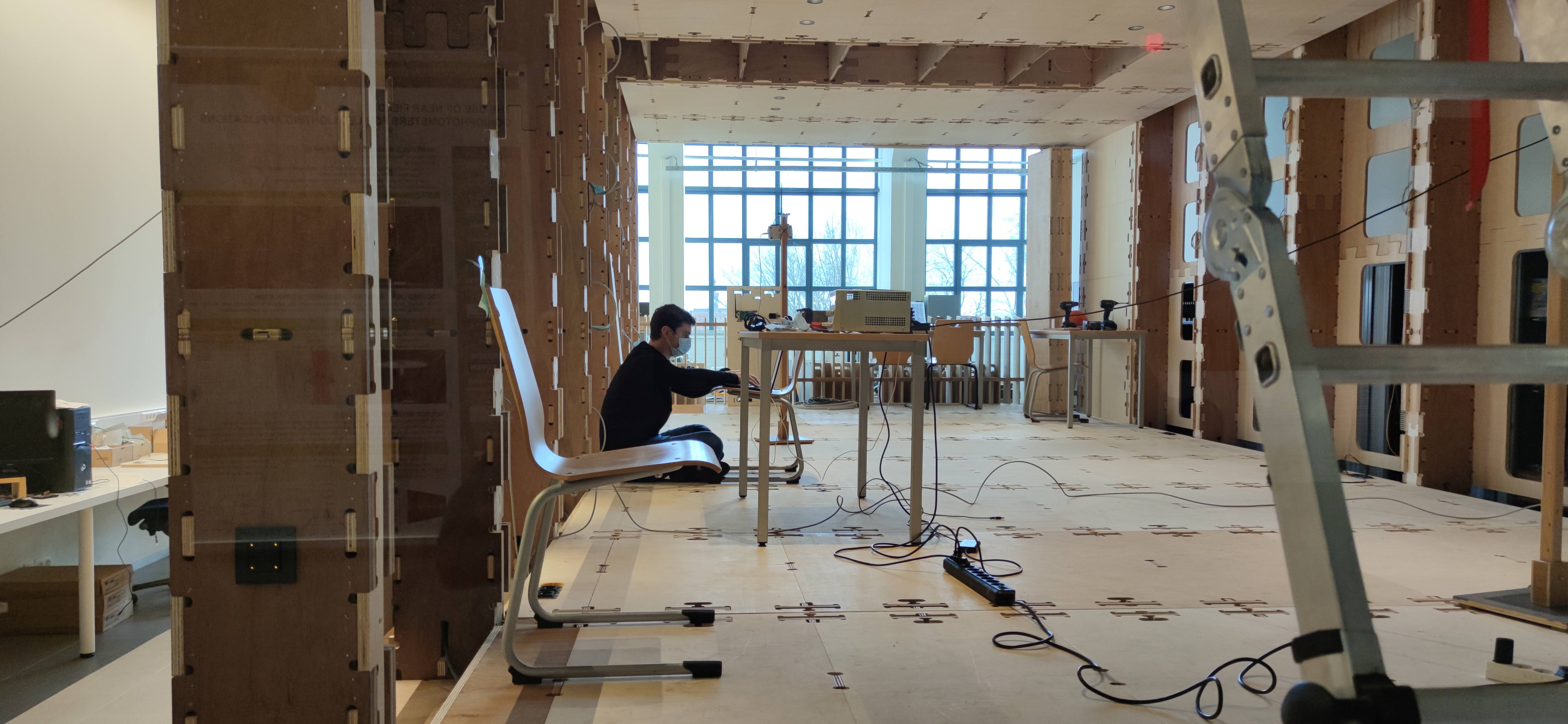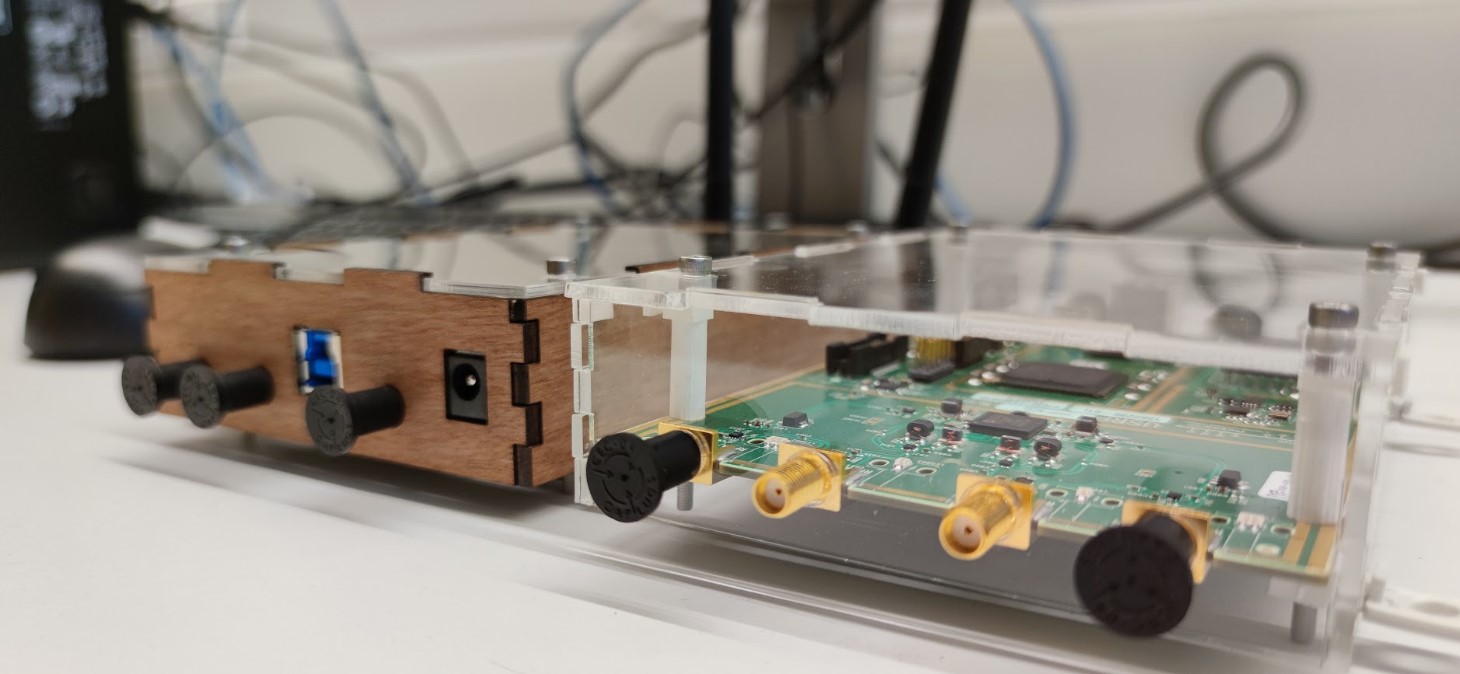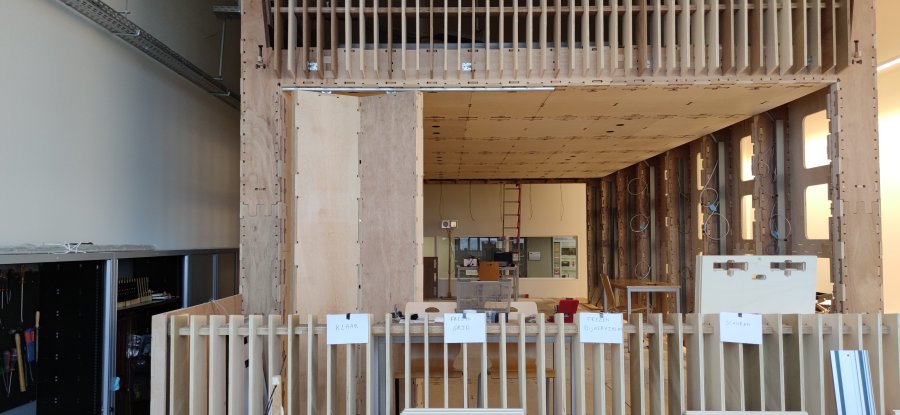Dear Reader,
We are pleased to present you the status of the Techtile infrastructure [1] and our R&D plans in this experimental facility. We hope you may find inspiration and interest in the Techtile environment. We aim to make it an open, living lab, and welcome academic and industrial partners to join us in setting up unique experiments.
The Techtile team, December 2020
Introducing the Techtile experimental facility
The Techtile measurement infrastructure is a multi-functional, versatile testbed for new communication and sensing technologies relying on fine-grained distributed resources. These resources are interconnected and that get integrated in 3D in the environment. The facility enables experimental research on hyper-connected interactive environments and validation of new wireless connectivity, sensing and positioning solutions. It allows researchers to develop the ICT technologies for emerging and future applications, for example efficient living and smart working and care environments, autonomous devices in logistics and Industry 4.0.
Techtile consists of a data acquisition and processing equipment backbone and a fabric of dispersed edge computing devices, radios, sensors, and LED sources. These bring intelligence close to the applications and can also collectively function as a massive, distributed resource.

Progress in the realization of the infrastructure
The works have started in the summer of 2020 with the construction of the wooden support structure, designed by our colleague Dimitri Coppens and based on the open WikiHouse concept. The structure hosts 140 detachable tiles of equal size on the walls, floor, and ceiling. A versatile set of equipment is mounted on these panels, effectively embedding the electronics into the room.
Due to the COVID-19 conditions the construction was organized in an elaborated sequence involving a limited number of team members at a time. Still, it was great to see the testbed grow rapidly, and our plan come true.
All tiles will be connected in an ‘electronics weave’, where each tile will be equipped with a local computer. The electronics equipment has been designed in detail in cooperation with our suppliers. The versatile approach and the innovative solutions we design to create the distributed cooperative environment, enable unique experiments in an elegant way.
The highlights of the electrical equipment of the testbed are:
- A multi-purpose Ethernet-based interconnect network to provide communication, power (PoE++ IEEE802.3bt), and time synchronization functionalities (IEEE 1588) to all the tiles and edge devices.
- 280 radios (2 channels x 140 tiles) that are programmable with GNU Radio to set up diverse communication technologies. The radio devices are of the type USRP B210.
- Raspberry Pi 4 (processing unit) as distributed computing devices, one on each tile. They can be extended with other edge computing devices.
- Acoustic sensors, photodetectors, LED sources with modulation capabilities, …
- Networking & Processing:
- Central server (Dell PowerEdge R7525):
- 8 x 64 GB RAM
- 8 x 2.4 TB HHD (RAID 5)
- 2x NVIDIA Tesla T4 16 GB
- 2 x 2 M.2 480 GB (OS-storage)
- 2 x AMD 7302 3 GHZ
- Network Switches (4 x DELL EMC S4148T-ON)
- 48 10Gbase-T
- PTP (IEEE 1588) support
- Router, NAT and VPN support (DELL VEP1405)
- Time Provider (Microsemi TimeProvider 4100)
- Central server (Dell PowerEdge R7525):
- Data Acquisition system: 180 synchronous channels, each 16 bit x 1.25 Msamples/sec.
- Robots to perform automated experiments in the 3D space - and to vacuum the floor under the construction ;-)

Diverse R&D activities foreseen in the Techtile testbed
Internet-of-Things. We develop the next generation IoT solutions that should accommodate a massive number of low power devices and upgrade them to get smarter, leveraging AI approaches. We conceive auto-discovery, self-diagnostics, and recovery approaches, to ultimately achieve zero e-waste impact.
(Beyond) 5G communication. We pursue experimental validation of (distributed) multi-antenna systems to support huge number of (low power) devices and provide ultra-reliable low latency connectivity. We will investigate cell-free operation and Large Intelligent Surfaces, new paradigms that may serve 6G systems.
Acoustic sensing and indoor positioning. We sense acoustic signals for a better understanding of the environment. Through hybrid RF-acoustic signaling we pursue positioning of low energy devices with unprecedented accuracy.
Secure connected devices. We exploit physical features of propagation and directivity to increase the security of connected devices, and enable private local networking solutions.
Wireless charging. We investigate whether/how devices can get charged without the need for cables, and eventually ‘on their spot’.
Visible Light Communication and positioning. We develop communication and positioning systems that modulate LED light sources without impacting their illumination functionality. They complement conventional RF systems where the interference poses aggravating problems.
Our plans for the next months
We aim to have the ‘baseline’ testbed operational by the end of 2020. In the coming months we will focus on the full realization of the Techtile infrastructure. We will perform tests to validate its features and in specific the innovative communication, distributed computation, and synchronization features. Gradually we will further scale up the number of devices and R&D experiments.
We plan to share the realization of Techtile to a broad public and organize an ‘opening event’ when it is safe to invite visitors physically in the lab. Check our website for more information: dramco.be/techtile.
You can contact the Techtile team or contact any member of the Techtile team:
- Geoffrey Ottoy
- Jarne Van Mulders
- Gilles Callebaut
- Dimitri Coppens
- Bert Cox
- Willem Raes
- Guus Leenders
- Liesbet Van der Perre
- Lieven De Strycker
The realization of the Techtile infrastructure is made possible thanks to the generous support of a bequest granted to the Science, Engineering and Technology Group of the KU Leuven. We have received hardware from both Niko and OnSemi. We also thank our equipment suppliers NI, Dell and Würth Electronics for their special support for this pioneering development.
